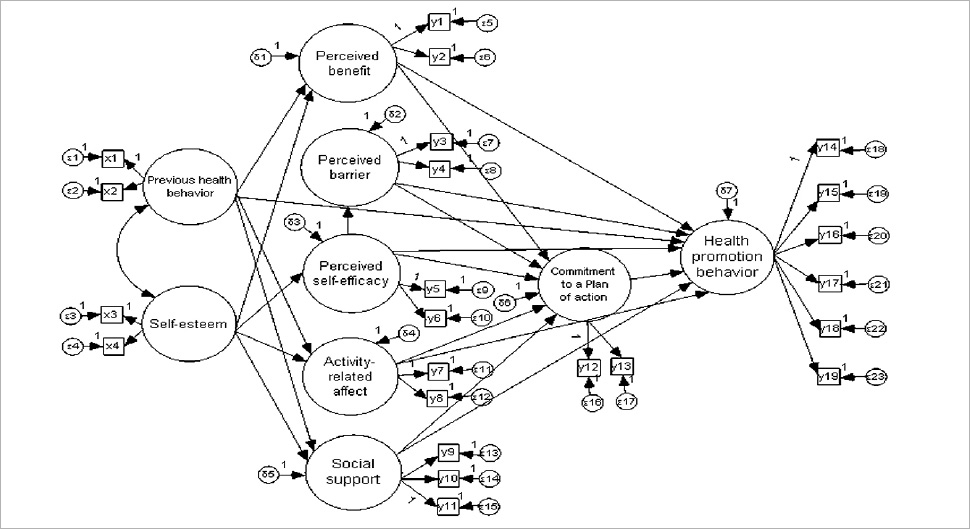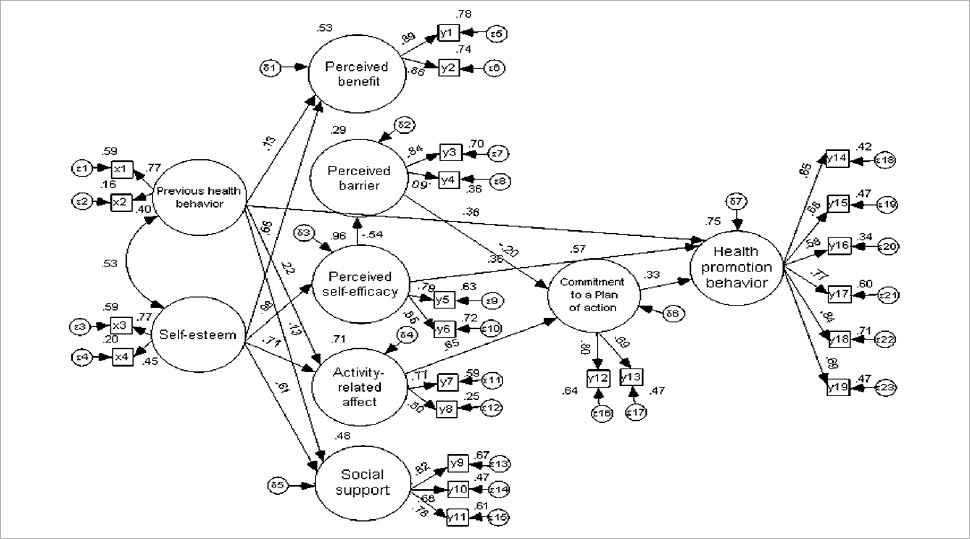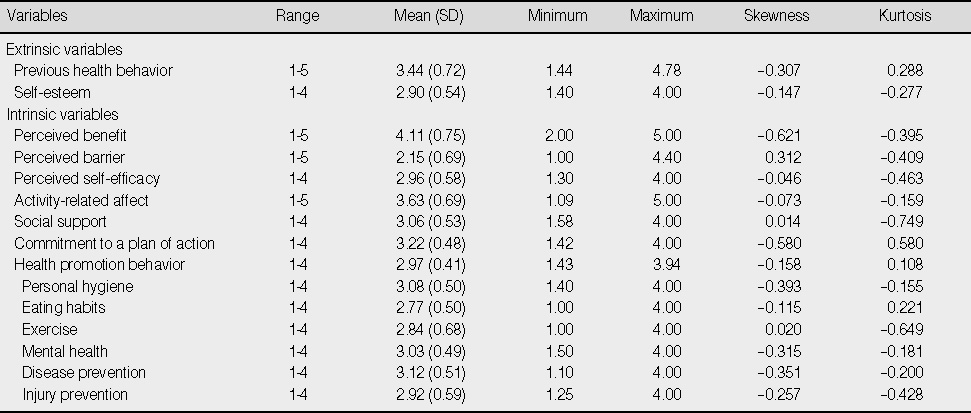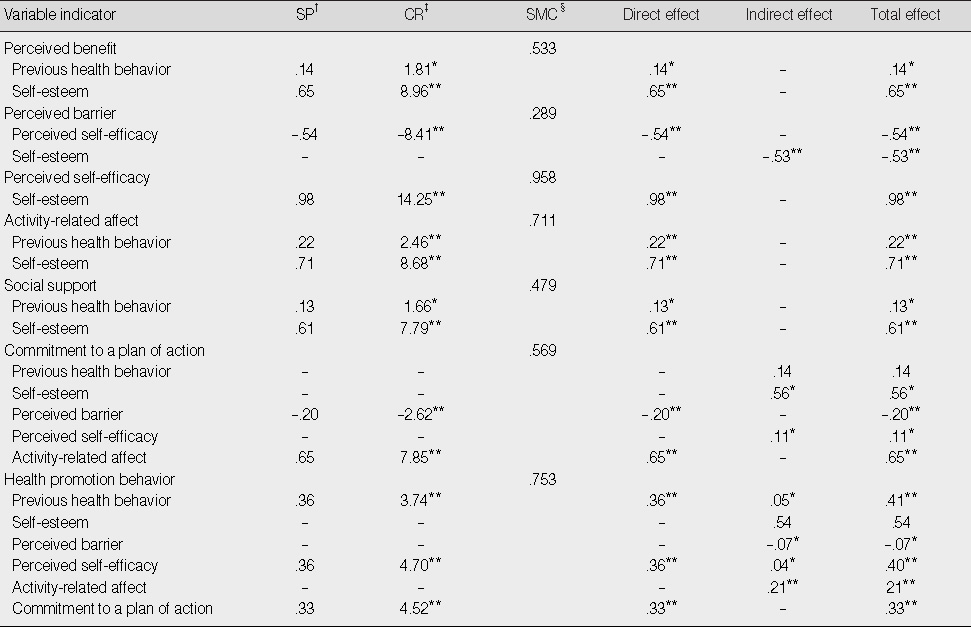Articles
- Page Path
- HOME > J Korean Acad Nurs > Volume 40(2); 2010 > Article
-
Original Article
- A Predictive Model of Health Promotion Behavior in Obese School-Age Children
- Mi Suk Jeon, Hyeon-Ok Kim
-
Journal of Korean Academy of Nursing 2010;40(2):264-276.
DOI: https://doi.org/10.4040/jkan.2010.40.2.264
Published online: April 30, 2010
1Health Teacher, Gosan Elementary School, Wanju, Korea.
2Professor, College of Nursing, Research Institute of Nursing Science, Chonbuk National University, Jeonju, Korea.
- Address reprint requests to: Jeon, Mi Suk. Gosan Elementary School, 148 Eupnae-ri, Gosan-myeon, Wanju 565-864, Korea. Tel: 82-63-263-4025, Fax: 82-63-263-4607, ymdje@hanmail.net
• Received: October 13, 2009 • Revised: October 19, 2009 • Accepted: April 1, 2010
Copyright © 2010 Korean Society of Nursing Science
Figure & Data
REFERENCES
Citations
Citations to this article as recorded by 

- A Prediction Model for Health Promoting Behavior in Obese Middle-Aged Women
Nohyun Bae, Oksoo Kim
Journal of Korean Academy of Fundamentals of Nursing.2022; 29(1): 84. CrossRef - The influence of mothers' health beliefs and attitudes on prevention of infectious diseases on preventive health behaviors of late school-aged children
Suchang Ham, Hanyi Lee
The Journal of Korean Academic Society of Nursing Education.2021; 27(3): 287. CrossRef - Effects of education in an obesity control program for obese homemakers on body fat and flexibility in Korea
Min‐Sun Song, Yong‐Kwon Yoo, Nam‐Cho Kim
Nursing & Health Sciences.2014; 16(3): 352. CrossRef - Elementary school children's perceptions of traditional Korean foods, based on the health belief model
KyoungAe Lee
Korean Journal of Nutrition.2013; 46(1): 86. CrossRef - Evaluation of items for the food behavior checklist and nutrition quotient score on children in rural areas of Gyeongbuk
Jung-Sun Yoo, Young-Sun Choi
Journal of Nutrition and Health.2013; 46(5): 427. CrossRef - Perception of the Importance of Health Promotion Behavior for Infants and Toddlers according to Mothers of Children in this Age Group and Graduate Students in Nursing
Kyung-Sook Bang, Mi-Kyung Kwon, Mi-Young Choi, Bo-Yun Huh, Sophia-Jihey Chung
Journal of Korean Academy of Child Health Nursing.2012; 18(2): 60. CrossRef
A Predictive Model of Health Promotion Behavior in Obese School-Age Children


Figure 1
Hypothetical model.
x1-x2=Previous health behavior; x3-x4=Self-esteem; y1-y2=Perceived benefit; y3-y4=Perceived barrier; y5-y6=Perceived self-efficacy; y7-y8=Activity-related affect; y9-y11=Social support; y12-y13=Commitment to a plan of action; y14-y19=Health promotion behavior.
Figure 2
Modified model with parameter estimates.
x1-x2=Previous health behavior; x3-x4=Self-esteem; y1-y2=Perceived benefit; y3-y4=Perceived barrier; y5-y6=Perceived self-efficacy; y7-y8=Activity-related affect; y9-y11=Social support; y12-y13=Commitment to a plan of action; y14-y19=Health promotion behavior.
Figure 1
Figure 2
A Predictive Model of Health Promotion Behavior in Obese School-Age Children
Descriptive Statistics of Study Variables (N=365)
Parameter Estimates for Modified Structural Model and Standardized Direct, Indirect, and Total Effects in Modified Model (N=365)
*p<.05; **p<.01.
†Standardized parameter; ‡Critical ratio; §Squared multiple correlation.
Table 1
Descriptive Statistics of Study Variables (N=365)
Table 2
Parameter Estimates for Modified Structural Model and Standardized Direct, Indirect, and Total Effects in Modified Model (N=365)
* †Standardized parameter; ‡Critical ratio; §Squared multiple correlation.
 KSNS
KSNS
 E-SUBMISSION
E-SUBMISSION




 Cite
Cite

